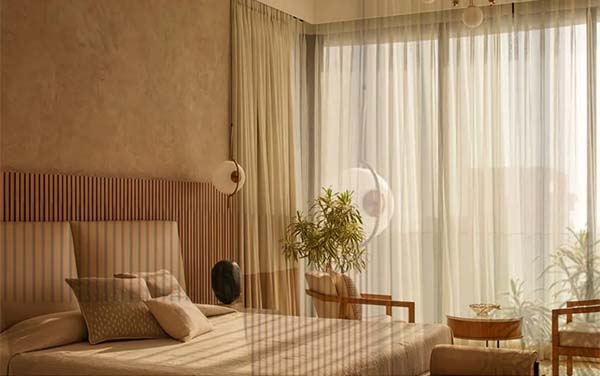When we set out to renovate our homes, it is especially important to understand the current interior design styles, which play a vital role in controlling the overall decorating style.
Perhaps you have moved into a new home, or are planning to redecorate and are looking for your favourite design style. Then this article will surely bring you some new inspiration.
After summarising ten popular interior design styles and the latest home trends, we found that wooden furniture plays a pivotal role, whether it’s the traditional and elegant New Chinese style, the simple and natural Scandinavian style, or the colourful Bohemian style. The gentle nature of wood provides endless possibilities for a variety of design styles.
1, Scandinavian interior design style (Nordic style)
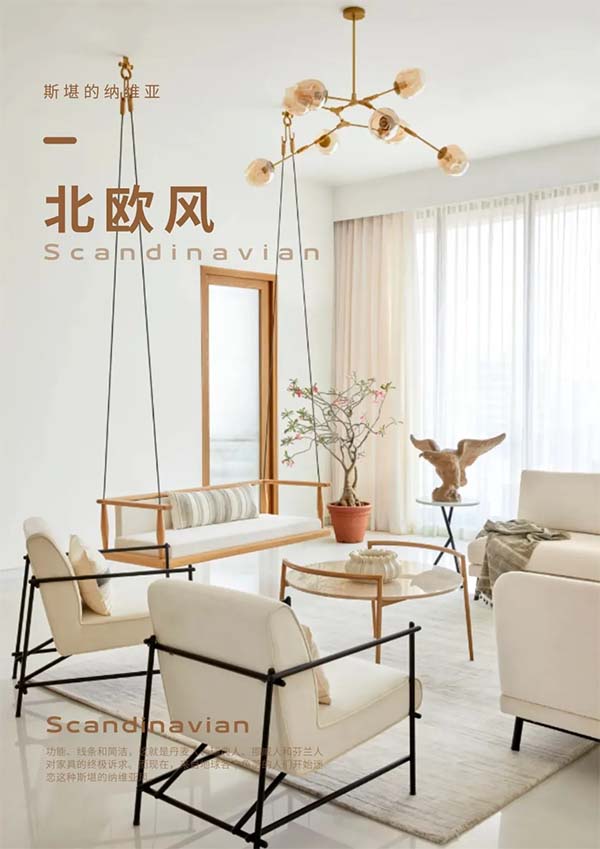
Scandinavian style puts the love of nature at the forefront, and as a result, natural materials such as wood and rattan, as well as linen, cotton and leather are used almost exclusively in its design schemes.
Scandinavian style mostly uses light tones such as white, grey and beige.
In recent years, two new interior styles have emerged from Scandinavian: Danish hygge, which emphasises warmth and cosiness, and Swedish lagom, which means ‘just right’ and aims to conserve natural resources through conscious, minimalist choices.
Whether you’re after hygge, lagom or a more minimalist Scandinavian style, they all blend easily with other interior design styles.
2, Japanese scandinavian interior design style (Japandi)
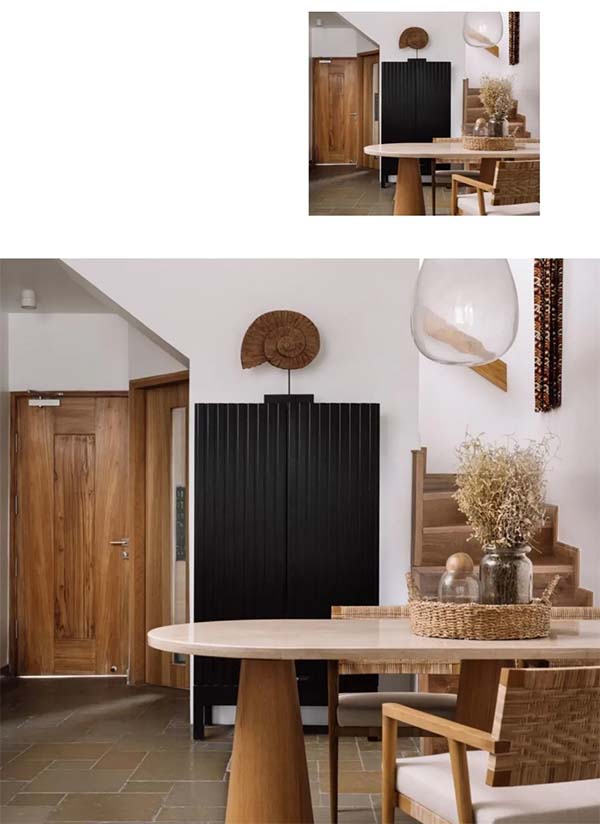
Japandi blends two cultures that both value nature despite regional and cultural differences. As a result, wood is used frequently in this style, and combined with materials such as stone and paper, it creates texture and layers in the space.
The biggest difference between Japandi and pure Scandinavian style is the frequent use of darker, richer tones such as black, dark green, terracotta and purple, as well as the incorporation of Chinese Feng Shui principles.
3, Bohemian interior design style
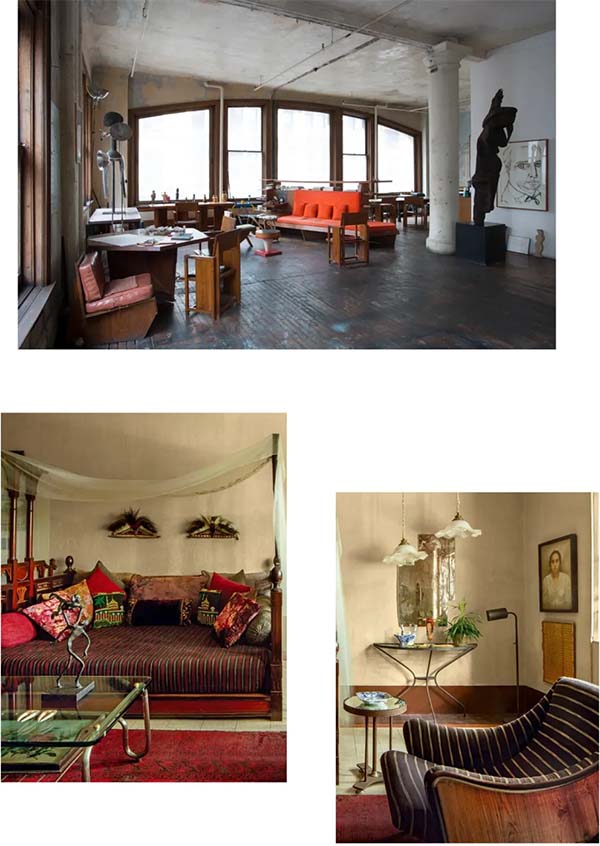
Boho is everywhere in the Western world in cafes, beach bars or restaurants and is becoming more and more popular.
Boho is short for Bohemian and originated in France in the early 19th century. This informal style was later adopted by rebellious artists, whose aesthetic heirs eventually led to the hippie style of the 60s and 70s.
Today, bohemian design refers to a versatile interior design style that is all-inclusive. It doesn’t matter if modern furniture is mixed with antiques, or if six different chairs are gathered around a large table – mixing and matching is exactly what this style is all about.
In terms of material decoration, the emphasis is on untreated natural materials such as wood, and fabrics such as rattan, cotton, mohair and linen, usually in beige, brown and olive colours.
Decorations often appear in bright yellow or blue colours, as well as bold patterns, wild fringing or dazzling embroidery. Crafts such as batik and weaving are also common. Items such as hammocks, wall hangings and hanging baskets also provide endless inspiration.
4, Mediterranean interior design style
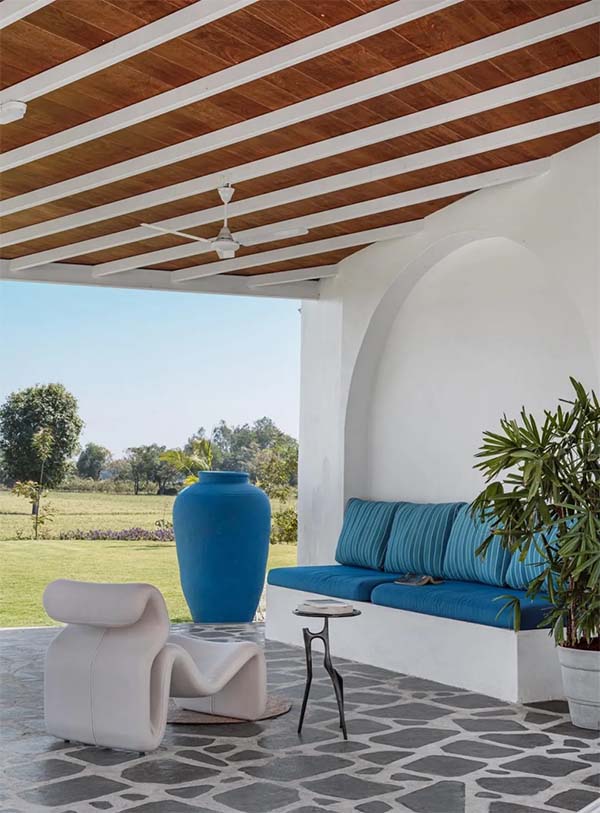
Fincas in Majorca, villas in Provence and little white houses on the Greek islands – together they embody the relaxed, rustic and welcoming nature of the Mediterranean style.
Incorporating Mediterranean style into your home is perfect for those who live in places where the sun doesn’t shine enough and want to feel the tranquillity of the seaside.
The key to the Mediterranean style is a mix of light, earthy colours and lots of warm tones such as white, beige, forest green and terracotta, complemented by ochre, orange and sky blue.
The most popular materials remain natural building materials, including wood, clay, raffia and linen. Floors and walls lend themselves to colourful mosaic tiles or handmade clay tiles.
Colourful ceramic tableware and Mediterranean plants can also make a statement.
5, Country style
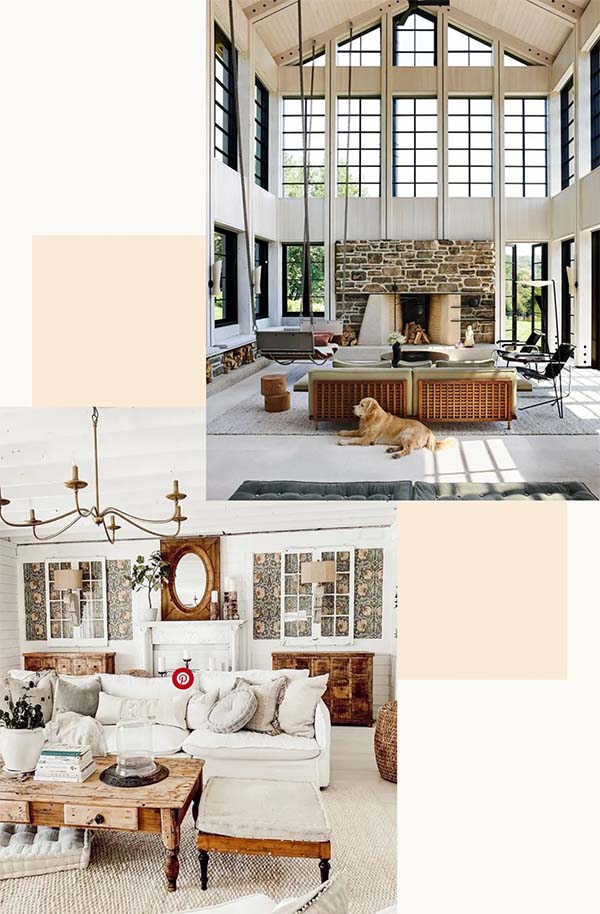
More and more people are getting tired of city life and enjoying being close to nature, which is why country style is becoming more and more popular.
Originating in England in the 17th century, the country style can be easily integrated into both big cities and remote suburbs.
Typical of the country style is the extensive use of wood and bricks. Choose furniture that is somewhat dated, preferably with slight imperfections or a vintage look. Solid wood furniture found at flea markets, heirlooms, and old items such as picture frames and tablecloths are all perfect.
6, Mid-century style
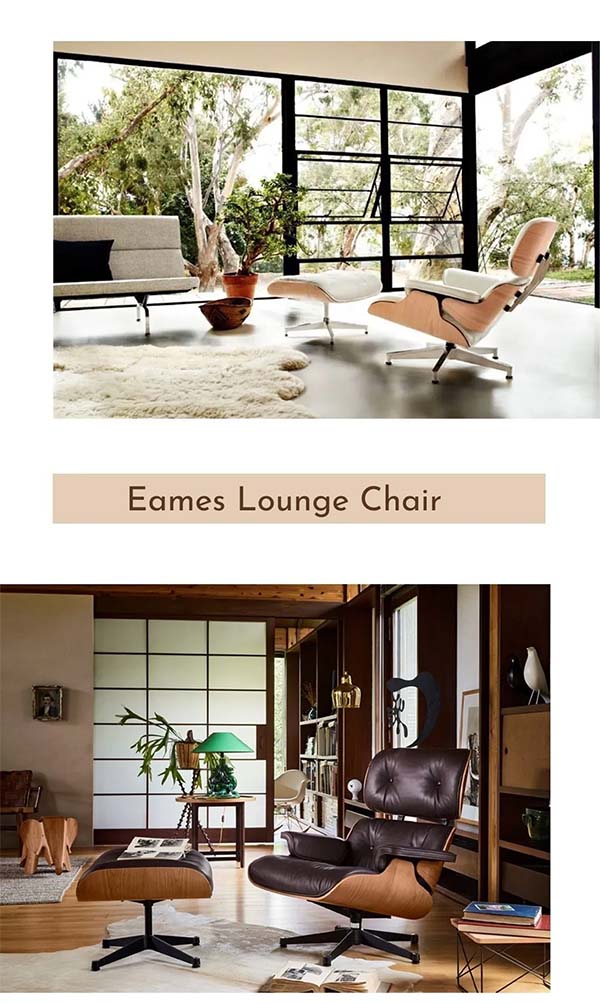
The 1950s and 1960s produced so many iconic designs that it’s no wonder mid-century style is still popular around the world today.
The Charles and Ray Eames Lounge Chair is a legend and is still in production today.
This comfortable chair displays several important characteristics of mid-century style: high-quality natural materials such as wood and leather combined with a sophisticated metal base. This feature is reflected in the Eames chair, Le Corbusier’s chairs, and the kidney tables and sideboards that are still popular today.
Sixties fashion was also characterised by the use of richly textured fabrics such as velvet and corduroy, as well as cedar green, bold navy blue and purple bouclé fabrics. Mid-century style was combined with gleaming brass or other metallic accents for a rugged beauty in softness.
7, Industrial style
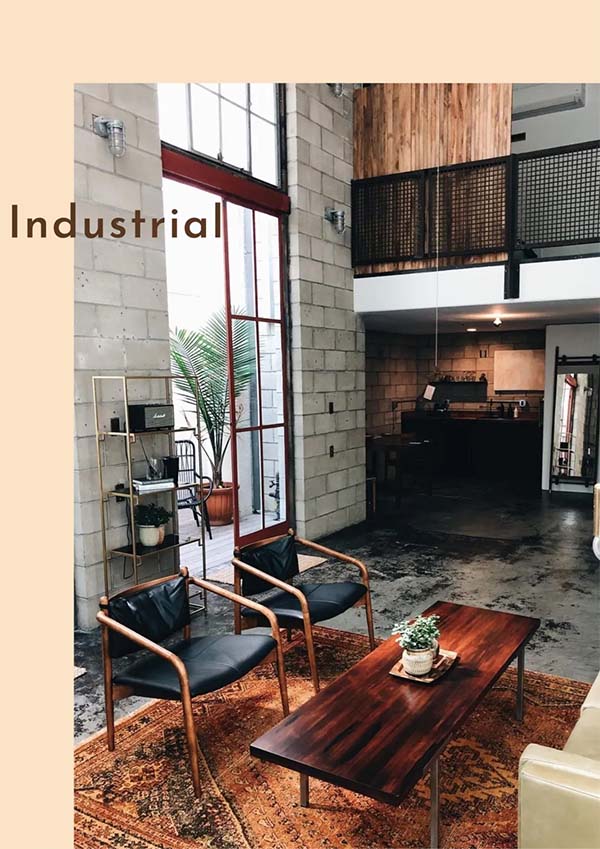
Of all interior design styles, industrial is the most casual. Born in the 1960s, industrial style still thrives today.
Brick walls, pipes and steel structures are left bare in design, deliberately creating a dramatic effect. Polished wood, weathered leather and rough concrete create a relaxed, worn look. Add a touch of cosiness by using fur, as well as darker tones such as rust, green or blue, or colourful velvet cushions to tweak the vibe.
Plants and utensils are also good choices, such as cacti, coloured glassware, or old Persian rugs and flea market-bought pewter items.
Mix and match old and new for DIY creativity, such as building wardrobes and shelves out of scrap steel or copper tubing for an even more unique look.
8, Bauhaus
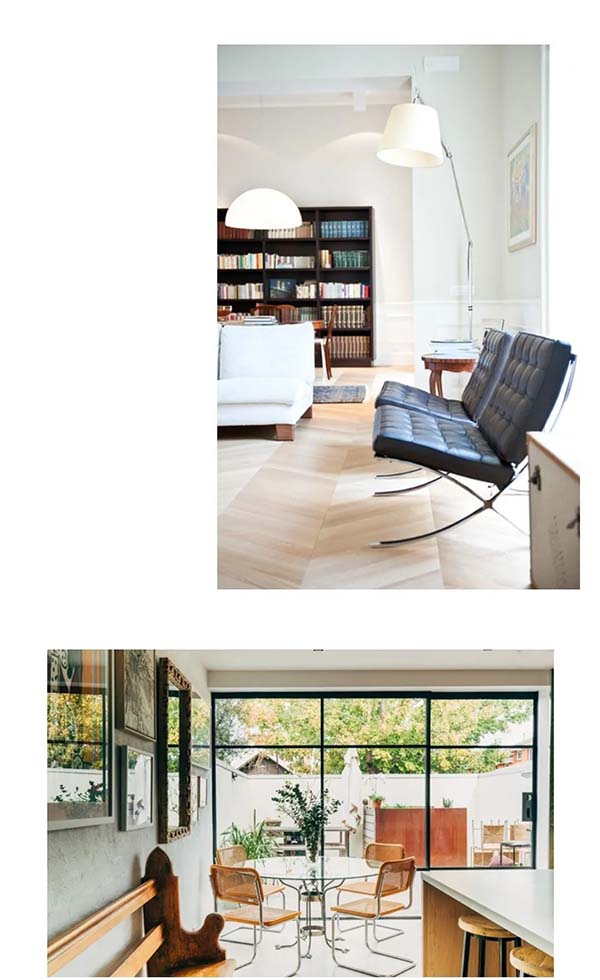
When you think of Bauhaus homes, the first thing that comes to mind is probably an armchair made of tubular steel and black leather.
Ludwig Mies van der Rohe’s Barcelona chair and Marcel Breuer’s Vasily chair are some of the most famous designs of the Bauhaus era, and are still popular today.
However, modern Bauhaus is not limited to a neutral palette of black, white and grey, but can also incorporate primary colours, often blended through wooden furniture. For followers of the Bauhaus, form always follows function and therefore unnecessary ornamentation should be minimised.
This straightforward, minimalist design is the timeless appeal of the Bauhaus style. Even after a century, it still looks fresh and bold.
9, Traditional style

As the name suggests, the classic traditional style doesn’t go with the flow; it’s like being in a time capsule.
Traditional style interiors usually use light-coloured ceilings, walls painted in cream, white or sand-toned neutrals, and dark, ornate solid wood furniture.
Wooden tables are set with glass bowls or vases with fresh flowers from antique dealers or flea markets. Tapestries or large mirrors with baroque frames add a vintage touch to the walls.
Curtains, sofas, armchairs and cushions can be made from heavy brocades or velvets in soft shades of burgundy, brown or green.
Eye-catching plaids or stripes are also popular in traditionally decorated rooms, adding a touch of elegance to the space.
10, Minimalist style
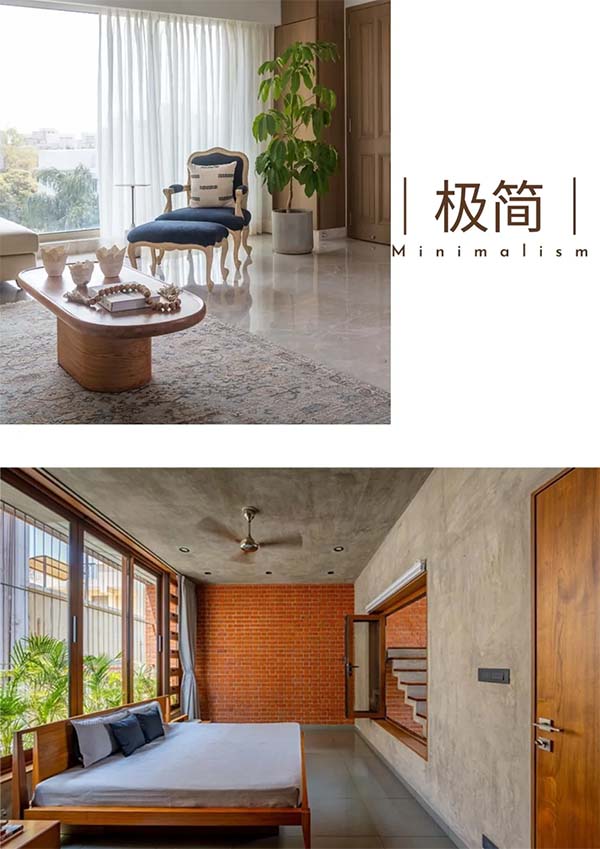
The minimalist style is often misunderstood. The absence of superfluous decoration doesn’t mean cold and empty, but rather a resistance to consumption patterns designed to reduce purchases.
Minimalism is not just about removing decorations, but creating clean spaces with fewer consumable items. For example, a sofa corner can replace several small chairs, and a dining table can serve as a workstation.
While many minimalists favour neutral tones and are increasingly opting for white, other colours are used in moderation. Combinations of different textures and large geometric shapes or patterns can also create a pure, harmonious environment. Interior design styles take on a new dimension in minimalism.


